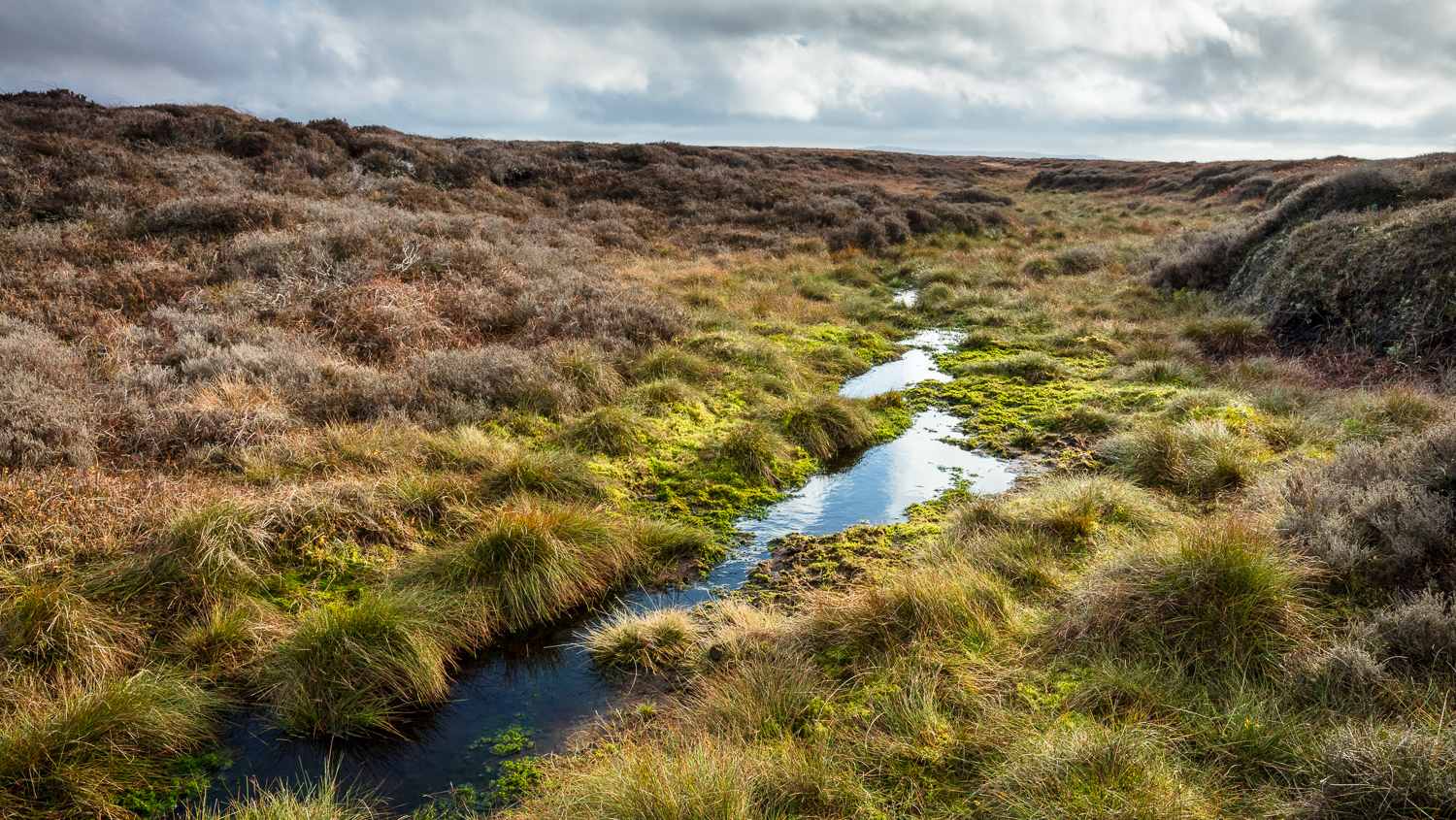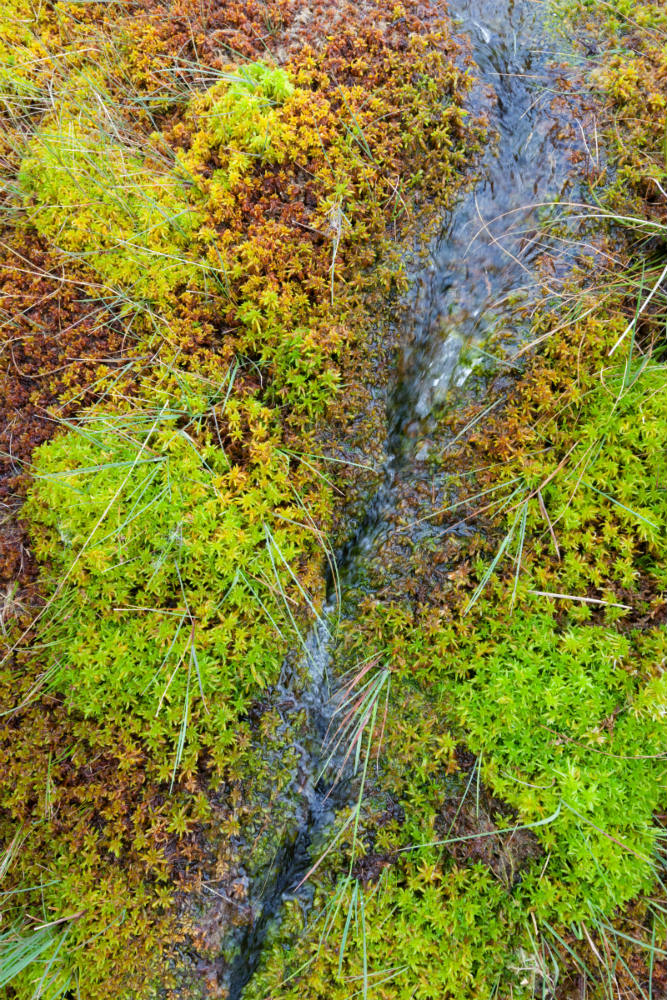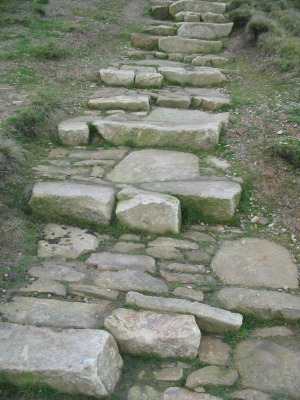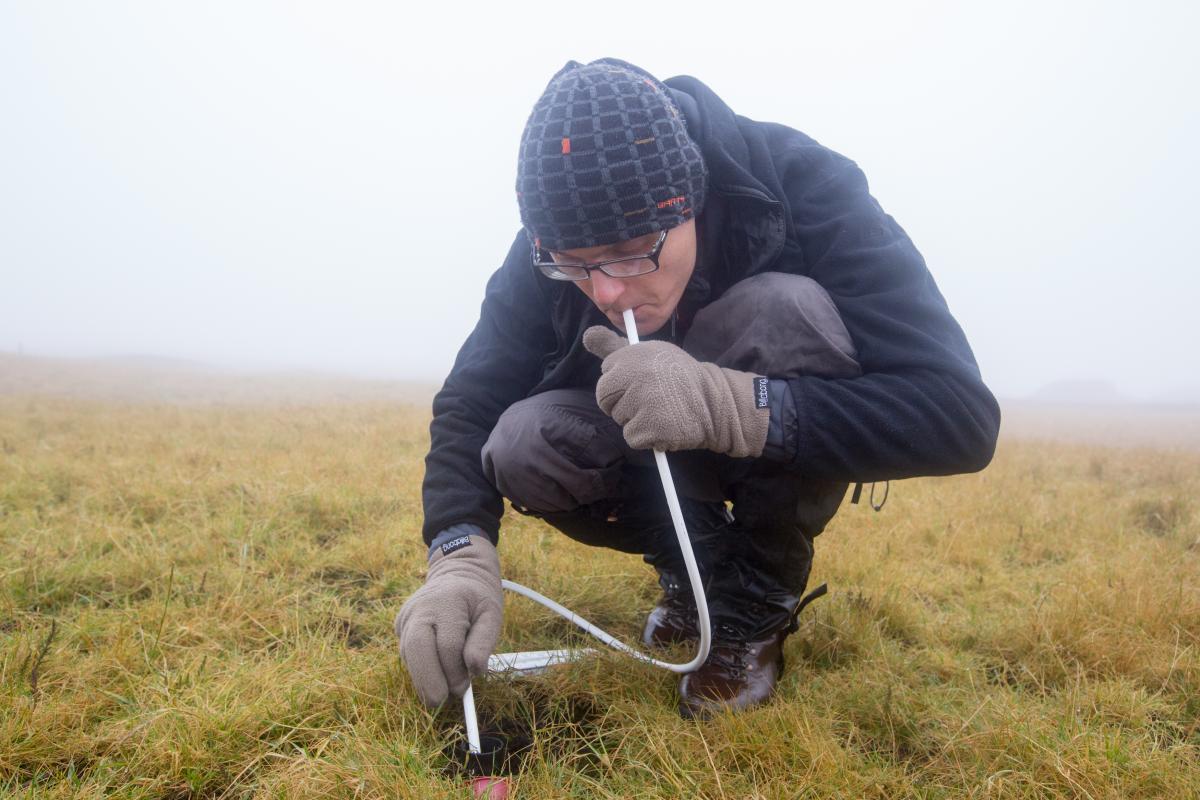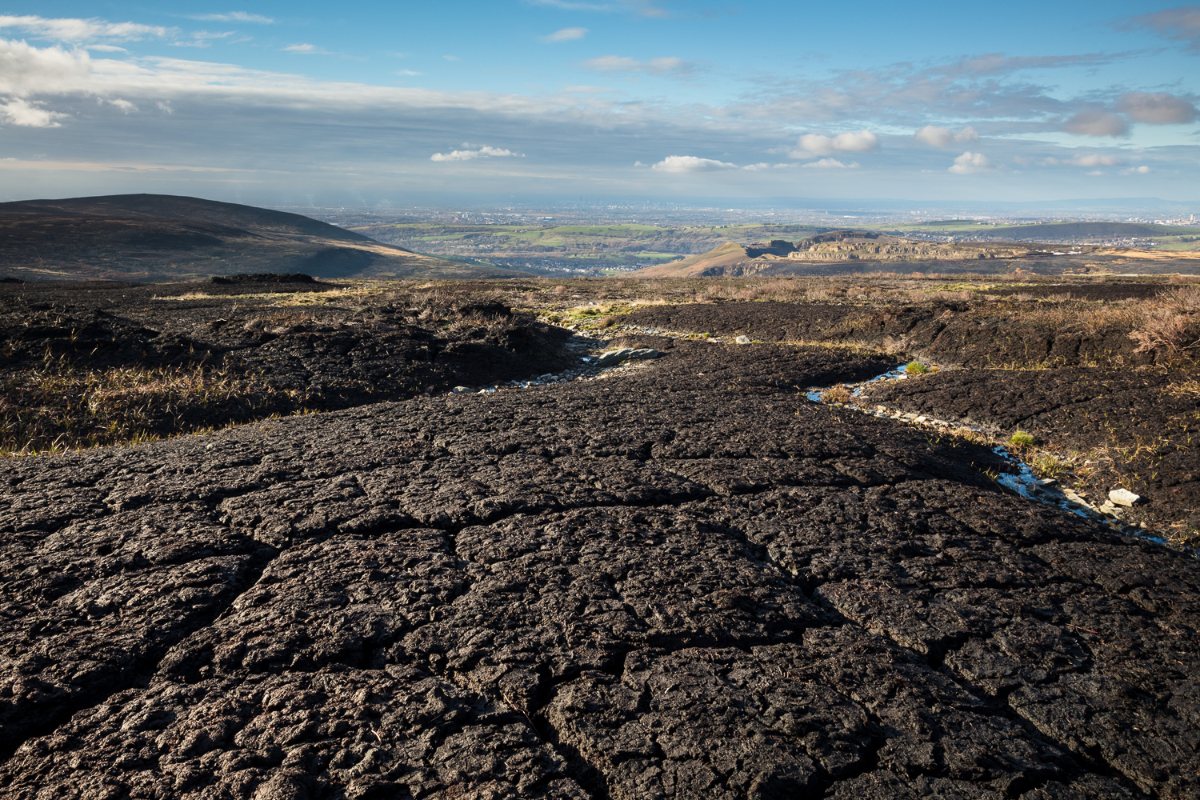
Repairing bare peat
The biggest problem with bare peat is that there is nothing holding it in place. This makes it susceptible to erosion by weather, as well as trampling by walkers and grazing animals.
Our first step is to stabilise the bare peat to stop any more being lost
In cold weather the higher moors are subjected to repeated daily cycles of freezing and thawing. In hot, dry weather the peat dries out. So both cold and hot weather loosen the surface layers of peat to be blown away by the wind and washed away by rain.
Our first step is to stabilise the bare peat so that plants can grow. Once they have established, their roots hold the peat together, stopping any more being lost.
On flat areas and shallow slopes we cover bare peat with cut heather ’brash’. This protects the peat from erosion and creates stable conditions for seed germination and a micro-climate which helps to protect new plants from harsh weather. The brash contains heather seeds as well as moss fragments and spores. As new plants grow, they form networks of roots that help to keep the peat in place.
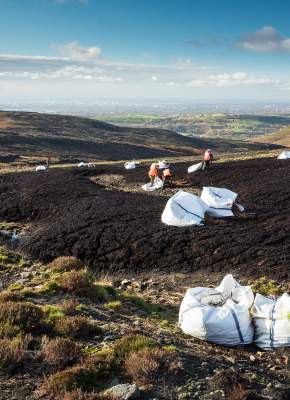
Once the bare peat has been stabilised, seeds of fast-growing grasses, dwarf shrubs and wavy hair-grass are sown
To cover large areas efficiently, seeds are usually sown from a helicopter. The grasses are fast-growing and quickly create root systems which further stabilise the peat. Because of historical pollution, peat in the Peak District and South Pennines can be as acidic as lemon juice, so lime (which is alkaline) is used to raise the pH of the peat soil to a level that the fast-growing ‘nurse’ grasses can tolerate. Fertiliser is used to encourage their growth. These ‘nurse’ grasses aren’t intended be a permanent fixture on the moors; they survive just long enough to provide the stability and protection young seedlings of moorland plants need to become established.
Some landforms, such as gullies, have sides that are too steep for heather brash to stay in place. One way of tackling this is to re-profile them. Where we can get access to the gully with machinery, steeply sloping sides can be reduced to gentler angles of 30 to 45°. Vegetation removed during re-profiling, and which was in danger of being lost to erosion, is planted back onto the newly shaped slopes to help to stabilise them. Elsewhere, we use a water-permeable landscaping fabric (geo-textile) which seeds and plants can grow through and which is completely biodegradable. It stays in place for around three years; that is long enough for seeds to establish and take over the role of stabilising the peat.
Learn more about these processes in the videos below produced during our MoorLIFE Project.
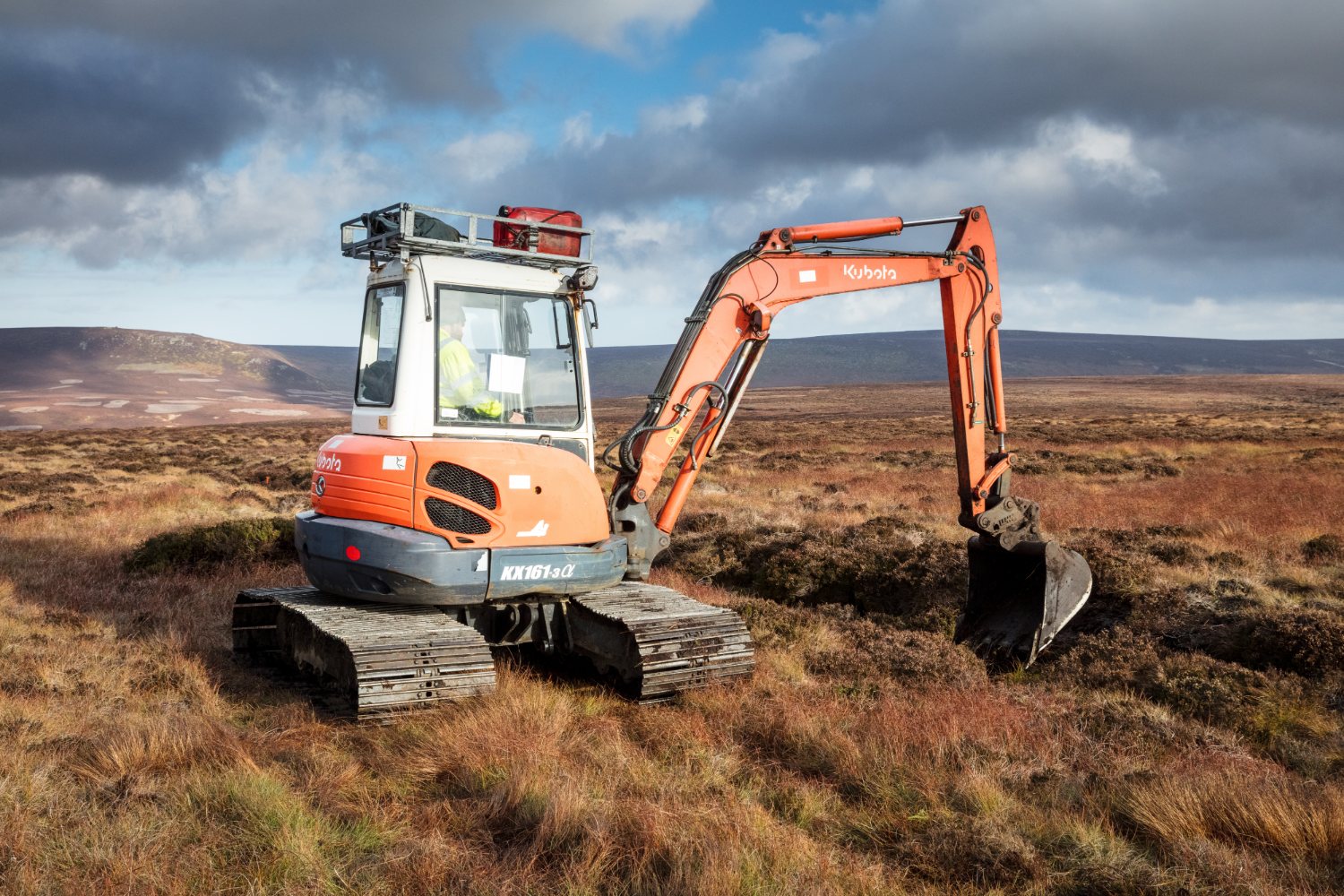
Lime, seed and fertiliser application
Stabilising bare peat with fast growing grasses.
Heather brash
How and why we use heather cuttings (called brash) to cover bare peat as part of the Moors for the Future Partnership's programme of works.
Guidance for land managers
Factsheets and guidance for people who work on blanket bog
